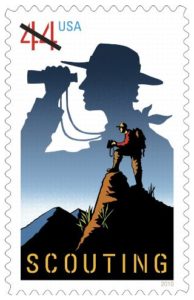 A few years ago I had an opportunity to facilitate a Lean Six Sigma (LSS) project with the local Boy Scouts of America (BSA) council.
A few years ago I had an opportunity to facilitate a Lean Six Sigma (LSS) project with the local Boy Scouts of America (BSA) council.
As an Eagle Scout, I was honored to help an organization that has given so much to me.
The project had a relatively simple goal: provide a reliable way for young men and their parents throughout Central Indiana to enter their contact information so that they could receive more information about scouting.
Due to the limited time commitments available for the participants, we decided to conduct the project as a two-day Kaizen (sometimes referred to as a rapid improvement event or REI). I was fortunate to have a Green Belt assist me with facilitation on the second day.
Over these two days, we took input from our team members, either parents or BSA Council members. This was used to develop the Voice of the Customer, Voice of the Business, and Critical Customer requirements.
We evaluated data from previous years as to how many young men had joined BSA annually and developed an estimate of the number of potential Scouts that would be accessing the system. Since this project occurred right before BSA’s 100th anniversary year and many special events were planned, the group anticipated an even larger response than normal. The team also discussed probable issues that could prevent young men and/or their parents from signing up.
The team divided into two groups to develop new ways to collect contact information from young men interested in learning more about scouting, or their parents. Team members then compared the two plans. The best aspects of each were selected and combined into the final process involving a new web-based user interface.
The team also developed a multi-level approach of assigning BSA volunteers to follow up on the requests, to ensure that all requests were acted upon in a timely manner by the appropriate representative. We then developed an implementation plan and a Failure Mode Effects Analysis (FMEA) to make sure that nothing fell through the cracks.
I followed up with the BSA council a few times to check on the project implementation status. Everything was implemented without serious impediments. Overall the team was very happy with the outcome of the project. I was very proud to a part of a team that had a wonderful result even though they had never been exposed to LSS.
LSS can be a powerful tool in helping non-profits like BSA do more of the good they were founded to do!
How are you helping your employees to work smarter by reducing the amount of time they spend on non-productive activities and correcting errors? If your business processes need a “check-up,” please email me at michael@leadingchangeforgood.com! I’d love to help you get back to a healthy, productive workplace.




Recent Comments